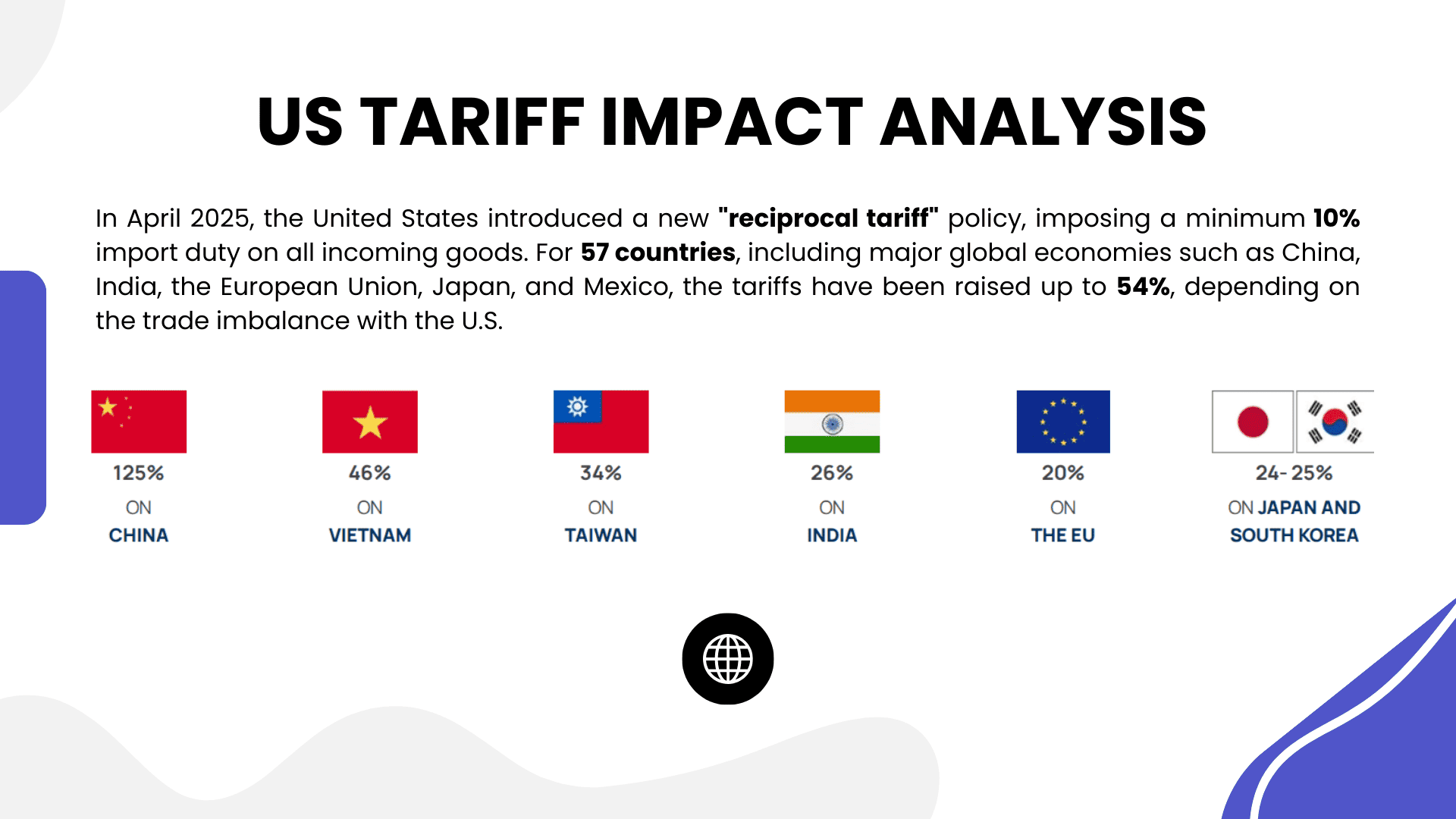Table of Contents
The global Multimedia Chipsets Market is set for significant growth, expected to reach USD 52.1 billion by 2034, up from USD 29.9 billion in 2024, growing at a CAGR of 5.7%. In 2024, the Asia-Pacific region dominated the market, capturing 43% of the share with revenues of USD 12.8 billion.
China’s multimedia chipset market alone is projected to expand from USD 4.4 billion in 2024 to USD 12.72 billion by 2034, at a CAGR of 4.3%. The graphics segment holds over 56% of the market share, with consumer electronics leading the sector with a 48% share.

US Tariff Impact on Market
U.S. tariffs on imported multimedia chipsets and components, such as processors and memory units, could impact market prices, especially for consumer electronics and graphics chipsets. Tariffs could increase production costs by approximately 5-8%, affecting the profitability of U.S.-based companies.
As a major player in consumer electronics, the U.S. may face higher import prices for key components, which could ultimately drive up the retail prices of multimedia devices.
➤➤➤ How your business elevates by our research (Corporate Mail ID Only) @ https://market.us/report/global-multimedia-chipsets-market/free-sample/
The rise in component costs could slow down the adoption of new products, particularly in price-sensitive segments like consumer electronics, which make up 48% of the market share. The impact is likely to be felt more by smaller firms that depend heavily on cost-effective imports for manufacturing and assembly.

Economic Impact
The tariffs could increase operational costs for U.S. manufacturers by 5-8%, resulting in higher prices for end consumers. The increased costs could limit demand, especially in cost-sensitive markets like consumer electronics.
Geographical Impact
The U.S. will face the most significant impact due to tariffs on multimedia chipsets imported from Asia. The higher production costs may decrease the U.S.’s global competitiveness in electronics, particularly in regions where price sensitivity is a key factor.
Business Impact
Increased tariffs could erode profit margins for U.S. companies, especially those relying on Asia-based imports for multimedia chipsets. Companies may seek alternative supply sources or raise product prices, which could slow market growth and reduce consumer demand in price-sensitive sectors.
Key Takeaways
- The global multimedia chipsets market is projected to reach USD 52.1 billion by 2034, growing at a 5.7% CAGR.
- The Asia-Pacific region dominates with 43% market share, translating to USD 12.8 billion in revenue.
- The graphics segment holds 56% of the market, while consumer electronics leads with 48%.
- U.S. tariffs may increase costs by 5-8%, slowing growth in the consumer electronics sector.
➤➤➤ Hurry!!! Grab a Limited Period Discount Here Contact Our Sales Representative Here @ https://market.us/report/global-multimedia-chipsets-market/free-sample/
Analyst Viewpoint
The multimedia chipsets market continues to show promising growth, driven by the demand for high-performance chips in graphics and consumer electronics. While short-term challenges like U.S. tariffs may increase costs, the long-term outlook is positive.
Technological advancements in semiconductor manufacturing, along with increasing demand in emerging markets, are expected to fuel the growth of the sector. The focus on high-quality graphics and improved consumer electronics will drive innovation, while supply chain adjustments will help mitigate the impact of tariffs.
Regional Analysis
Asia-Pacific holds the dominant share in the global multimedia chipsets market, with China being a major contributor. The region benefits from a robust electronics manufacturing ecosystem, along with a growing demand for multimedia devices.
North America and Europe are also significant markets, with the U.S. playing a key role in the demand for consumer electronics. While China’s growth in the multimedia chipset market is impressive, Europe’s focus on industrial applications and North America’s shift towards advanced electronics will further bolster global demand.
➤ How do U.S. tariffs affect these markets?
Business Opportunities
The multimedia chipsets market presents substantial business opportunities, especially in the consumer electronics and graphics sectors. Companies focusing on providing innovative, high-performance chipsets for gaming, video, and multimedia applications are well-positioned to capitalize on the growing demand.
The shift toward high-definition multimedia devices, including smart TVs, gaming consoles, and personal devices, offers growth prospects. Additionally, companies investing in R&D to create energy-efficient, cost-effective chipsets will benefit from the demand for sustainable technologies. Expanding into emerging markets in Asia and Latin America will also offer lucrative growth opportunities.
Key Segmentation
- By Application: Consumer Electronics, Automotive, Industrial, Healthcare
- By Product Type: Graphics Chipsets, Audio Chipsets, Video Chipsets
- By End-User Industry: Retail, Gaming, Telecom, Healthcare
- By Region: North America, Europe, Asia-Pacific, Rest of the World
Key Player Analysis
Players in the multimedia chipsets market are focusing on expanding their product portfolios and increasing performance in graphics, audio, and video chipsets. Companies are investing in R&D to improve chipset efficiency, processing power, and energy consumption.
Strategic partnerships with consumer electronics companies and OEMs are becoming increasingly important for market penetration. Moreover, as the demand for multimedia devices grows, players are looking to scale production in emerging markets to reduce manufacturing costs and improve product availability.
List of Key Players
- NVIDIA Corporation
- Intel Corporation
- Qualcomm Inc.
- Cirrus Logic Inc.
- Advanced Micro Devices Inc.
- DSP Group Inc.
- Apple Inc.
- Broadcom Corporation
- Realtek Semiconductor Corporation
- Marvell Technology Group Ltd
- Samsung Group
- MediaTek Inc.
- ST Microelectronics
Recent Developments
Recent advancements in the multimedia chipsets market include the integration of AI and machine learning technologies to improve graphics rendering and video quality. Companies are also exploring the use of advanced fabrication techniques to increase efficiency and reduce the size of chipsets, enabling better performance in portable multimedia devices.
Conclusion
The multimedia chipsets market is poised for significant growth driven by increasing demand in consumer electronics and graphics applications. While short-term challenges, such as the impact of U.S. tariffs, could slow adoption in some sectors, the overall market outlook remains positive. Advancements in technology will continue to drive innovation and market expansion.
Discuss your needs with our analyst
Please share your requirements with more details so our analyst can check if they can solve your problem(s)



